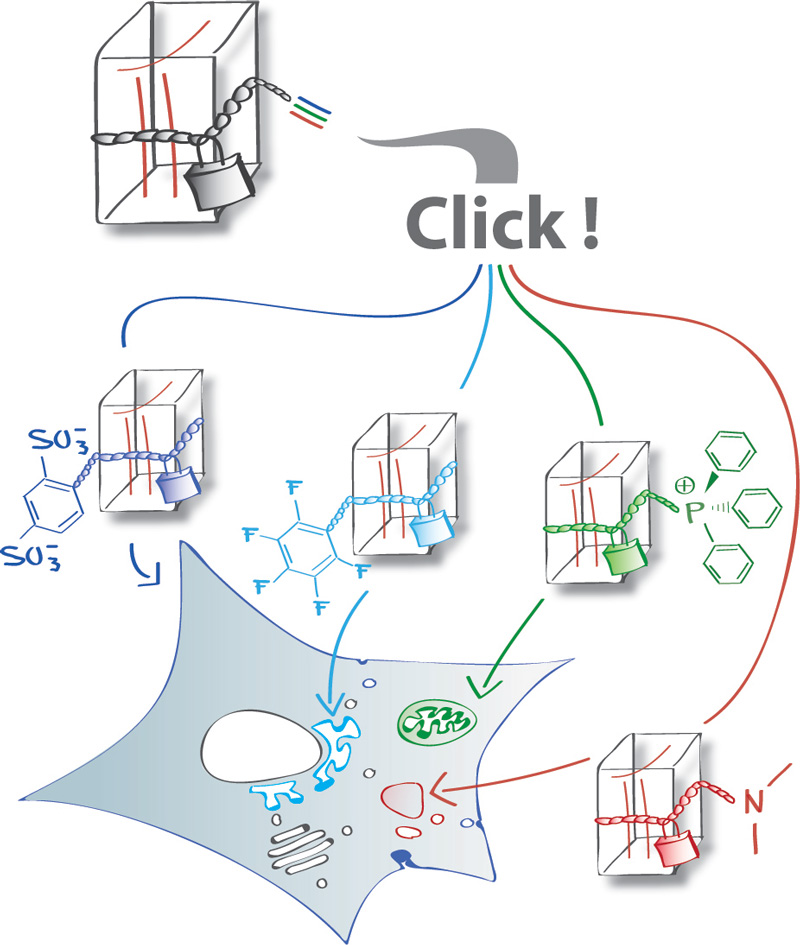
© Wagner et.al. / MPI-CBG
The inside of our cells is organized into many different compartments, called organelles, each carrying out special functions. Most of these structures are separated by membranes from the cytosol. Lipids are the main building blocks of membranes. They can also act as chemical messengers between cells and organelles, causing functions like cell growth or stress responses. To study lipid function, caged lipids have been particularly useful for scientists. This method involves attaching a chemical group (“cage”) to the native lipid that can be cleaved off (“uncaged”) when activated by light, thereby releasing the lipid from the membrane and into the cell. A major limitation in this design is that lipid uncaging affects all membranes. Therefore, if one wants to study lipids in a particular compartment inside the cell, there’s no existing approach to do this via lipid uncaging.
In their study published in Angewandte Chemie International Edition, the journal of the German Chemical Society (Gesellschaft Deutscher Chemiker), the research group of André Nadler at the Max-Planck-Institute of Molecular Cell Biology and Genetics (MPI-CBG) has now developed a new tool that allows for the uncaging and release of lipids in specific organelles. With this new “Click Cage” tool, scientists can attach (or “click”) a functional group targeting an organelle-of-interest to the existing caged lipid. Now, when this clicked and caged lipid is loaded to cells it accumulates in the respective organelle where the native lipid can be liberated for further action. What type of action? Together with Doris Höglinger at the Heidelberg University Biochemistry Center (BZH), they showed that this targeted uncaging of lipids is followed by a direct effect on intracellular calcium levels. “We can now control where in the cell lipids can be uncaged, look at the type of signal it can trigger, such as calcium response, and directly compare the calcium levels after a concentration burst of a native lipid in different compartments of a cell”, says Nicolai Wagner, the first author of this study.
The “Click Cage” represents a major step to study lipid function in cellular processes with great precision. “This method is beneficial for researchers that want to study signaling lipids in living cells,” says Andre Nadler. “With this tool, we and others can continue to shine the spotlight on lipids.”
Nicolai Wagner, Milena Stephan, Dr. Doris Höglinger, Dr. André Nadler: A Click Cage: Organelle‐Specific Uncaging of Lipid Messengers. Angewandte Chemie International Edition, 26 July 2018